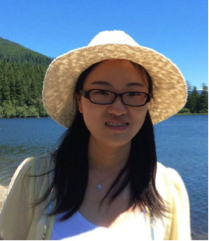Dr. Li Wang from UT Arlington’s Math Department will present at the Seminar Monday February 26 at 1:15pm in Room 105 of Nedderman Hall. Dr. Wang’s presentation title, abstract, and biographical sketch are below.
 Title: Graph Structure Learning based on Reversed Graph Embedding
Title: Graph Structure Learning based on Reversed Graph Embedding
Author: Li Wang
Location: Nedderman Hall (NH) Room 105
Date: Monday, February 26
Time: 1:15pm – 2:15pm
Abstract: Many scientific datasets are of high dimension, and the analysis usually requires retaining the most important structures of data. Many existing methods work only for data with structures that are mathematically formulated by curves, which is quite restrictive for real applications. To get more general graph structures, we develop a novel graph structure learning framework that captures the local information of the underlying graph structure based on reversed graph embedding. A new learning algorithm is developed that learns a set of principal points and a graph structure from data, simultaneously. Experimental results on various synthetic and real world datasets show that the proposed method can uncover the underlying structure correctly.
Biographical Sketch: Dr. Li Wang is currently an assistant professor with Department of Mathematics, University of Texas at Arlington, Texas, USA. She worked as a research assistant professor with Department of Mathematics, Statistics, and Computer Science at University of Illinois at Chicago, Chicago, USA from 2015 to 2017. She worked as the Postdoctoral Fellow at University of Victoria, BC, Canada in 2015 and Brown University, USA, in 2014. She received her Ph.D. degree in Department of Mathematics at University of California, San Diego, USA, in 2014. She received the master degree in Computational Mathematics from Xi’an Jiaotong University, Shaanxi, China, in 2009 and the Bachelor degree in Information and Computing Science from China University of Mining and Technology, Jiangsu, China in 2006. Her research interests include data science, polynomial optimization and machine learning.
-Posted by Jay Rosenberger